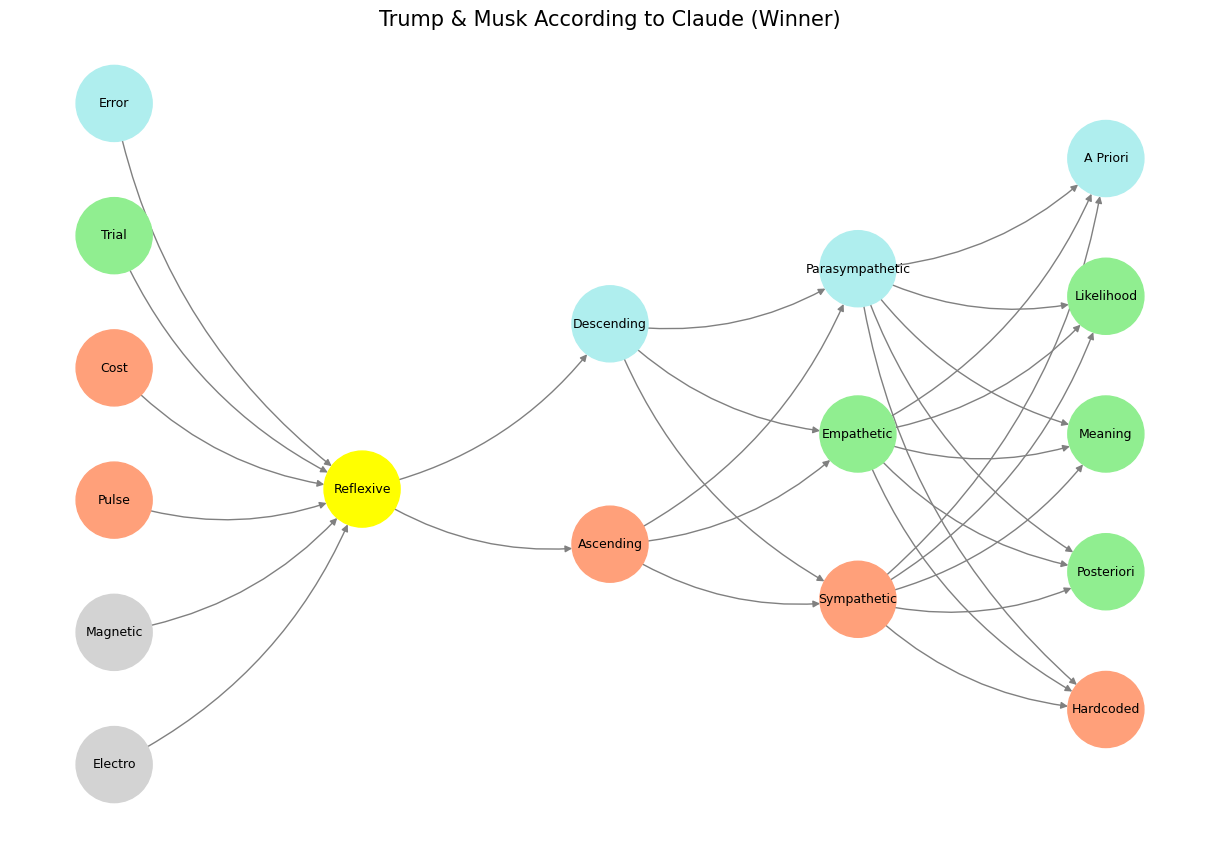Ecosystem#
The thematic and stylistic connections between The Razor’s Edge (1944) by W. Somerset Maugham and the works of Oscar Wilde reveal a shared sensibility, though they ultimately diverge in their philosophical destinations. Both writers are fascinated by the performance of high society, the contradictions of human desire, and the allure of an outsider’s perspective. However, where Wilde’s characters revel in artifice, irony, and aesthetic detachment, Maugham’s protagonist, Larry Darrell, embarks on a genuine spiritual quest that Wilde never would have entertained with sincerity.
At the heart of The Razor’s Edge lies a tension that Wilde himself explored: the conflict between hedonism and transcendence. Wilde’s works—most notably The Picture of Dorian Gray—dwell in a world of aristocratic luxury, where wit and beauty reign supreme but at a terrible cost. His characters, particularly the likes of Lord Henry Wotton, treat life as an aesthetic experiment, pushing pleasure and excess to their limits while scorning any notion of deeper meaning. Maugham, too, begins his novel in the same world, with characters like Elliott Templeton, an aging socialite whose life is devoted to the pursuit of status, wealth, and the right invitations to the most exclusive salons. He is, in many ways, a character Wilde could have written—a man whose identity is so intertwined with the theater of high society that he cannot imagine a world beyond it. Yet Maugham does something Wilde never does: he introduces a counterpoint, a protagonist who steps outside the system and seeks something more.

Fig. 5 It Takes AI to Curate Data to Train AI. Isaiah 2:2-4 is the best quoted & also misunderstood article on the conditions of social harmony. Putnams discomforts with the data tells us that he was surprised by what the UN knew half a century earlier and what our biblical prophet articulated several millenia ago. Putnam published his data set from this study in 2001 and subsequently published the full paper in 2007. Putnam has been criticized for the lag between his initial study and his publication of his article. In 2006, Putnam was quoted in the Financial Times as saying he had delayed publishing the article until he could “develop proposals to compensate for the negative effects of diversity” (quote from John Lloyd of Financial Times). In 2007, writing in City Journal, John Leo questioned whether this suppression of publication was ethical behavior for a scholar, noting that “Academics aren’t supposed to withhold negative data until they can suggest antidotes to their findings.” On the other hand, Putnam did release the data in 2001 and publicized this fact. Source: Wikipedia#
Larry Darrell, the novel’s restless seeker, is the kind of outsider Wilde’s work is fascinated by, yet never fully embraces. Wilde’s sharpest minds—Algernon Moncrieff, Lord Henry, even Wilde himself in his essays—see through society’s hypocrisies but remain within them, wielding their wit like a fencer’s blade. They critique, manipulate, and subvert, but they never truly abandon the game. Larry, on the other hand, is a different breed of iconoclast. He rejects material success, travels to India in search of enlightenment, and ultimately finds a form of peace that exists entirely outside the structures Wilde’s characters are both trapped in and amused by. If Wilde had written The Razor’s Edge, Larry might have been recast as a dazzlingly eloquent cynic, one who sees through the illusions of wealth but ultimately indulges in them nonetheless. Maugham, however, allows Larry to escape entirely.
This contrast is underscored by Maugham’s own presence as the novel’s narrator, which creates an almost Wildean effect. Like Wilde himself, Maugham is an observer of high society, an artist moving through the world of the rich and powerful with an air of knowing detachment. His prose, much like Wilde’s, is filled with elegant turns of phrase, piercing observations, and an understanding that most of human behavior is a grand performance. Yet where Wilde used this perspective to highlight the absurdity of societal norms, Maugham deploys it to frame Larry’s journey in stark relief. Through the narrator’s eyes, we see that Larry’s rejection of conventional success is not foolish idealism but a radical departure from the carefully constructed illusions that define most of the other characters’ lives.
Irony plays a key role in both writers’ work, but it manifests in different ways. Wilde’s irony is that of the perpetual insider, the man who sees the joke and tells it better than anyone else. His characters understand the world as a masquerade and delight in the absurdity of it all. Maugham, however, uses irony to highlight the limitations of those who remain within society’s gilded cage. Elliott Templeton’s desperate attempts to maintain his status become almost tragicomic, while Isabel, who once loved Larry, chooses a life of comfort and deception over an uncertain but profound journey. In a Wildean novel, these characters might have been given a sharper, more dazzlingly witty fate. In The Razor’s Edge, they are instead left in a kind of limbo, haunted by what they failed to grasp.
Ultimately, Maugham takes Wilde’s aesthetic of detachment and pushes it to its existential limit. His novel asks what happens when someone truly steps beyond the pageantry of social life, not just to mock it, but to reject it entirely. Wilde’s characters never make that leap; they are too entranced by the beauty of the game, even as they ridicule it. Larry, however, does. In doing so, he becomes the kind of figure Wilde might have admired but never written: a man who sees through the illusion and chooses not to play along.
Show code cell source
import numpy as np
import matplotlib.pyplot as plt
import networkx as nx
# Define the neural network fractal
def define_layers():
return {
'World': ['Electro', 'Magnetic', 'Pulse', 'Cost', 'Trial', 'Error', ], # Veni; 95/5
'Mode': ['Reflexive'], # Vidi; 80/20
'Agent': ['Ascending', 'Descending'], # Vici; Veni; 51/49
'Space': ['Sympathetic', 'Empathetic', 'Parasympathetic'], # Vidi; 20/80
'Time': ['Hardcoded', 'Posteriori', 'Meaning', 'Likelihood', 'A Priori'] # Vici; 5/95
}
# Assign colors to nodes
def assign_colors():
color_map = {
'yellow': ['Reflexive'],
'paleturquoise': ['Error', 'Descending', 'Parasympathetic', 'A Priori'],
'lightgreen': ['Trial', 'Empathetic', 'Likelihood', 'Meaning', 'Posteriori'],
'lightsalmon': [
'Pulse', 'Cost', 'Ascending',
'Sympathetic', 'Hardcoded'
],
}
return {node: color for color, nodes in color_map.items() for node in nodes}
# Calculate positions for nodes
def calculate_positions(layer, x_offset):
y_positions = np.linspace(-len(layer) / 2, len(layer) / 2, len(layer))
return [(x_offset, y) for y in y_positions]
# Create and visualize the neural network graph
def visualize_nn():
layers = define_layers()
colors = assign_colors()
G = nx.DiGraph()
pos = {}
node_colors = []
# Add nodes and assign positions
for i, (layer_name, nodes) in enumerate(layers.items()):
positions = calculate_positions(nodes, x_offset=i * 2)
for node, position in zip(nodes, positions):
G.add_node(node, layer=layer_name)
pos[node] = position
node_colors.append(colors.get(node, 'lightgray'))
# Add edges (automated for consecutive layers)
layer_names = list(layers.keys())
for i in range(len(layer_names) - 1):
source_layer, target_layer = layer_names[i], layer_names[i + 1]
for source in layers[source_layer]:
for target in layers[target_layer]:
G.add_edge(source, target)
# Draw the graph
plt.figure(figsize=(12, 8))
nx.draw(
G, pos, with_labels=True, node_color=node_colors, edge_color='gray',
node_size=3000, font_size=9, connectionstyle="arc3,rad=0.2"
)
plt.title("Trump & Musk According to Claude (Winner)", fontsize=15)
plt.show()
# Run the visualization
visualize_nn()


Fig. 6 So we have a banking cartel, private ledgers, balancing payments, network of banks, and satisfied customer. The usurper is a public infrastructure, with open ledgers, digital trails, block-chain network, and liberated customer#

